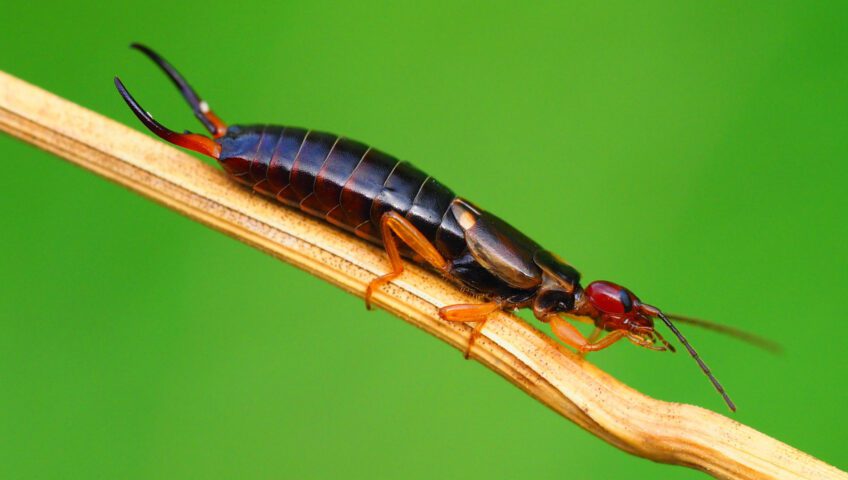Earwigs are small, brown insects with conspicuous pincers at the rear of their bodies. Despite their menacing appearance, they are generally harmless to humans but can be an annoyance when they enter homes in large numbers.
Earwigs are garden pests in some regions
Earwigs feed on decaying organic matter, plants and even other insects. In large numbers, they can cause damage to garden plants, mainly seedlings and soft fruits. While they do not bite or burrow into ears (as myths suggest), their presence can still be unsettling for gardeners, particularly those outside Florida.
Ringlegged earwig
Within Florida, earwig damage to garden plants tends to be minor. The most common earwig by far in the Sunshine State is the omnivorous ringlegged earwig. Despite doing minor damage to plants, both above and beneath the ground, their habit of preying on harmful garden insects offsets any harm they might inflict on the garden.
Inviting themselves inside
A greater nuisance is when earwigs show up in your house. During dry periods, they can enter a home looking for dampness, which is their preferred environment. They often gain access through cracks and gaps in the house.
Effective control methods
There are a number of measures you can take to curb an infestation:
Reduce moisture: Eliminate any plumbing leaks in the home. Run a dehumidifier in areas that need it. Also, reduce soggy leaf litter around the house that provides them with cover.
Seal off entry points: Make sure to caulk and seal any cracks that might give them easy access.
Turn off lights at night: Earwigs are drawn to light sources, so provide them with as few such sources as possible inside your home.
Traps: Setting out earwig traps can help control small infestations and give you an idea of the problem’s extent. Common traps include rolled-up newspapers or damp cardboard boxes left overnight and then discarded in the morning.
Professional pest control: For larger infestations, it’s advisable to seek a professional pest control service, such as Slug-A-Bug. A thorough inspection by a technician can identify the problem areas and suggest effective solutions.
